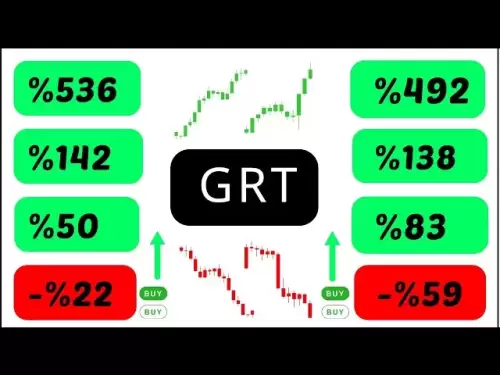 |
|
 |
|
 |
|
 |
|
 |
|
 |
|
 |
|
 |
|
 |
|
 |
|
 |
|
 |
|
 |
|
 |
|
 |
|
Cryptocurrency News Articles
Silicon Battery Breakthrough: P-300N's Capacity Retention in Coin Cell Tests
Jun 26, 2025 at 05:36 am
NEO Battery Materials' P-300N silicon battery material shows impressive capacity retention in coin cell tests, paving the way for larger cell formats and commercialization.
![]()
Hold onto your hats, battery enthusiasts! The world of silicon batteries is buzzing with exciting news, particularly concerning capacity retention and coin cell performance. Let's dive into the latest developments.
Silicon Battery Capacity Retention: A Hot Topic
Capacity retention – it's the holy grail of battery technology. How well does a battery hold its charge over repeated use? That's the question everyone's asking. And when it comes to silicon batteries, known for their potential to pack a serious energy punch, maintaining capacity is crucial.
NEO Battery Materials' P-300N: A Game Changer?
Enter NEO Battery Materials, a Canadian company making waves with its P-300N silicon battery material. The latest buzz? Their P-300N High-Stability Variant absolutely crushed its own targets in long-term capacity testing. We're talking over 90% capacity retention after 300 cycles in a coin full cell format. That's not just good; that's exceeding expectations!
What makes this so significant? Well, P-300N utilizes metallurgical silicon (MG-Si), the lowest-cost silicon input available for battery-grade applications. High performance with cost-effective materials? Yes, please!
Moving Beyond Coin Cells: The Next Frontier
The impressive coin cell results are just the beginning. NEO is now setting its sights on larger cell formats, specifically single-layer pouch cells. This involves rigorous long-term battery performance tests (500+ cycles!) to fine-tune the interactions between P-300N, graphite anodes, and various cathode materials.
And they're not stopping there. NEO is already in talks with battery prototypers and manufacturers across South Korea, the US, and Germany to gear up for near-commercial, multi-layer cell testing. Because let's face it, mass production requires some seriously specialized equipment.
Scaling Up for the Future
To meet the demands of its global partners, NEO has invested in post-treatment equipment and is even adding a key manufacturing unit to boost overall capacity. They're teaming up with Rockwell Automation to establish a 240-ton facility in Windsor, Ontario, with the potential to scale up to a whopping 5,000 tons of silicon anode material per year.
My Take: Silicon Batteries Are Primed for Prime Time
These developments from NEO Battery Materials are more than just incremental improvements; they represent a significant leap forward in silicon battery technology. The combination of high capacity retention, cost-effective materials, and a clear roadmap for commercialization suggests that silicon batteries are poised to play a major role in the future of energy storage. The 90% capacity retention after 300 cycles indicates that this technology is stable and can be applied to power electric vehicles in the near future.
So, buckle up, folks! The future of batteries is looking brighter (and more silicon-y) than ever before. It's an exciting time to be following these advancements, and I can't wait to see what innovations the next few years will bring. The future is electric, and it may very well be powered by silicon!
Disclaimer:info@kdj.com
The information provided is not trading advice. kdj.com does not assume any responsibility for any investments made based on the information provided in this article. Cryptocurrencies are highly volatile and it is highly recommended that you invest with caution after thorough research!
If you believe that the content used on this website infringes your copyright, please contact us immediately (info@kdj.com) and we will delete it promptly.





























































